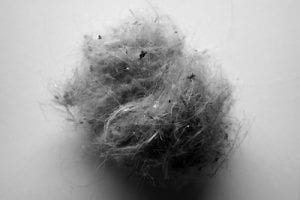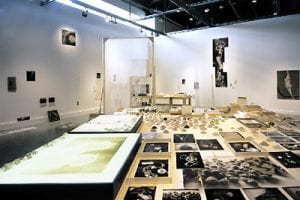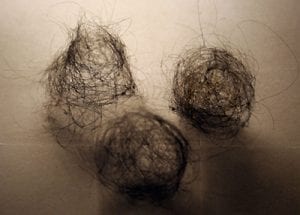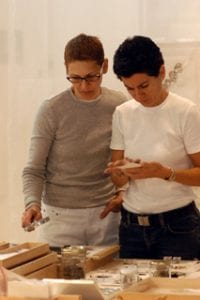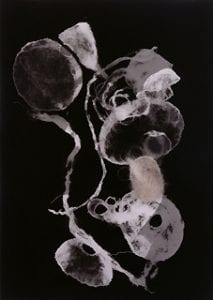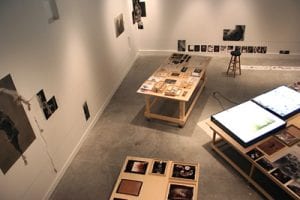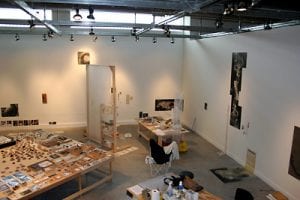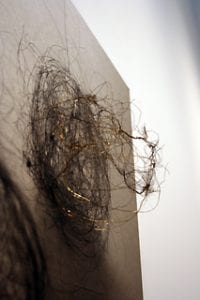
- This event has passed.
DUST-O-GRAMS
February 13, 2008 - April 13, 2008
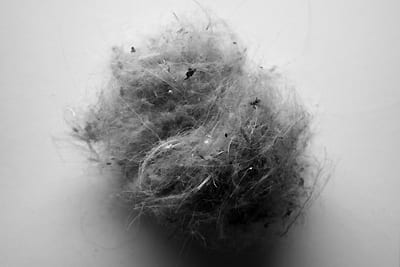
CURATOR’S STATEMENT
Dust-o-Grams is a highly creative and unusual collaboration between artist/photographer María Martínez-Cañas and conceptual artist/naturalist Kim Brown. My first encounter with the collaborative was at María’s studio in Miami, where the process actually started to take form and ideas became tangible objects. I was taken by the harmonious, intriguing and intelligent work. I then proposed a dual exhibition of María’s series, “Lies” and the Dustogram collaboration with Kim Brown that I curated as part of Fotofest 2006 at the De Santos Gallery in Houston. Previously a distinct group show, “Trading Places,” curated by Bonnie Clearwater, was presented at the Museum of Contemporary Art (MOCA) in Miami from July to September of 2005.
One of the most important aspects of the collaboration in María’s studio and continuing at MOCA was the opportunity for the artists to deal with the process with everything exposed; a true multimedia and diverse conceptual platform. At MOCA the dust material was collected by the museum on a daily basis, and the atelier became an ongoing research laboratory. By these historic events, and now terming the work “dust-o-grams,” the original images and documentation of María’s studio and the MOCA open gallery make up the installation at the LUAG Zoellner Multimedia Gallery.
We acknowledge with thanks the assistance of the artists, and the De Santos Gallery of Houston, Texas. — Ricardo Viera
The following excerpts of a conversation with María Martínez-Cañas , Kim Brown and Ricardo Viera illustrate the curatorial thinking process leading to the exhibition at LUAG.
RV: As an artist of ideas, you always fly solo. Why have you collaborated with Kim Brown in Dust-o-Grams?
MMC: It was a combination of many different things. First, I believed in the endless possibilities of “mixing” our work together. I first met Kim in Munich in 2004, and was intrigued by her materials as she explained her work. I had no idea what the work looked like, but was intrigued by her choice of material — dust. I asked her to send me visual samples of the works. What I saw was extraordinary and left me with the sense that I had encountered something magical. We started writing daily e-mails, which turned into a dialogue, exchanging thoughts and ideas about the world, life, art, everything. After a few months I realized that there was this artist living in Alaska at that time with whom I had a connection based on words, images and objects – something I had never really experienced before. So it was natural for me to invite her to my studio in Miami to create work together, because through all this exchanging, we were already collaborating with each other. Have I always flown solo? Yes. But when I encountered someone whose work and words fascinated me — well, let‘s say I had nothing to lose, and neither did she, I think. Dustograms is testament to the potential of two artists who trust and believe in each other’s work.
RV: LUAG is utilizing the MOCA show as an inspirational guide to give extra meaning to Dust-o-Grams. Do you feel that this is the right way to go?
KB: The Dustograms began as an experiment in María’s studio. Opposite mediums that were thought not to mix — dust and photography —and we only knew each other through e-mails. We took a chance. We were making just to make and see what, not to exhibit. At MOCA there was always the fact that the work we were making during the residence would end up in an exhibition there, so for me, it felt forced and rushed, like we needed a product to show. For me, María’s studio is where the real creation took place, not in the MOCA residence. The residency and exhibition were the result of the fantastic creative time we spent in the studio, and not the other way around.
RV: Although you were fascinated with what Kim Brown was doing, dust seems somewhat to not belong in your lexicon. However, I see a common conceptual thread. Am I right? If so, why is that commonality there?
MMC: My English dictionary describes dust as being the particles into which something disintegrates. Aren’t our bodies supposed to become dust after we die? When Kim spoke to me about dust for the first time, I thought of DNA, of evidence of human presence.
RV: What is collaboration to you —- in your association with Maria?
KB: Coming from an architectural background, it seems natural to collaborate because every part of architecture is based on some kind of interactive feedback. In other art collaborations I have been involved in, the work was conceived starting from a point of nothing, developing ideas and the work as it went along. In collaborating with María, we each had our own work and came together to see what would come out of it. We sent things through the mail at first, discussed life and work by e-mails and phone, and formed a friendship through this creative energy. We were like sponges learning from each other. María worked in the studio in the morning, and I did my work at night. They met in the middle during the day into early evening.
RV: What is in essence the chronology of all your series and how important is it as an integral part of your work?
KB: All my work is a continuum in the way that it documents my life every day, and a series in the way the medium groups together and changes within this documentation.
MMC: The cyclical chronology of my work is an integral part of it. I have found through the years that I work better in series – because I feel there is always a beginning and an end. Anyone who really knows me knows that I am a very structural person —- this comes through in my utilization of structures as part of the act of making the work.
PODCAST: “Dustograms”: Spring 2008
